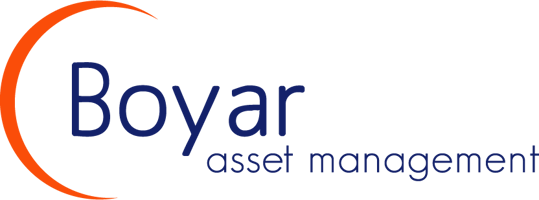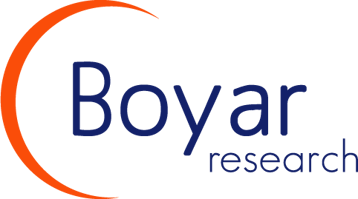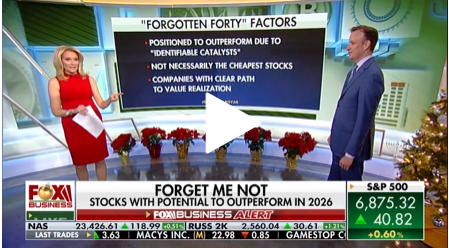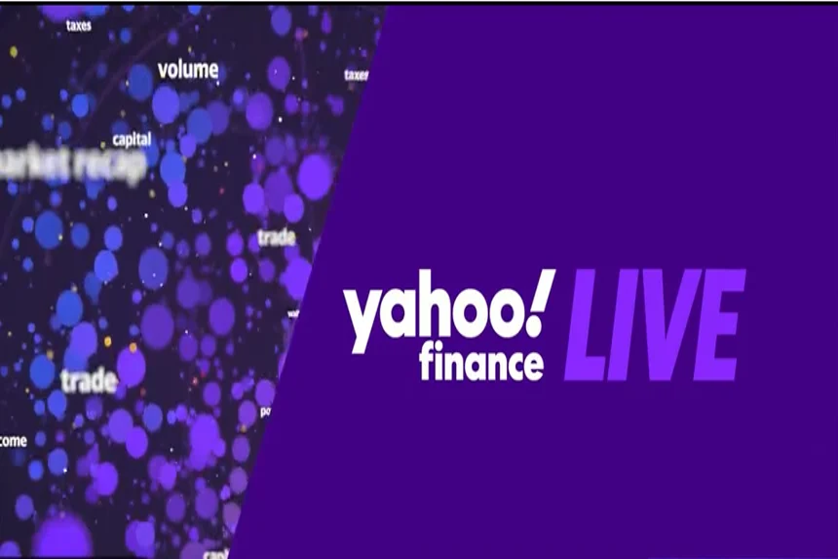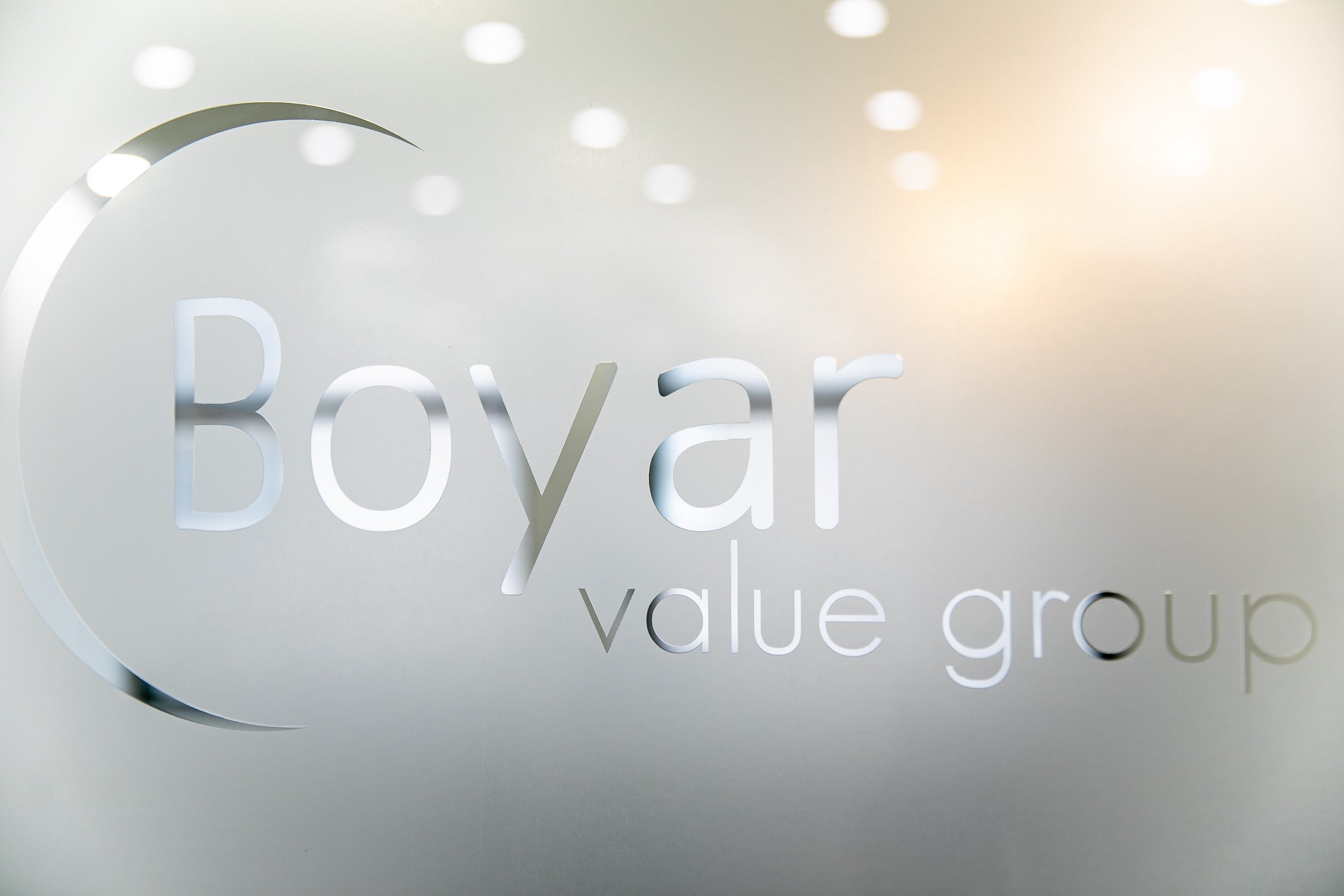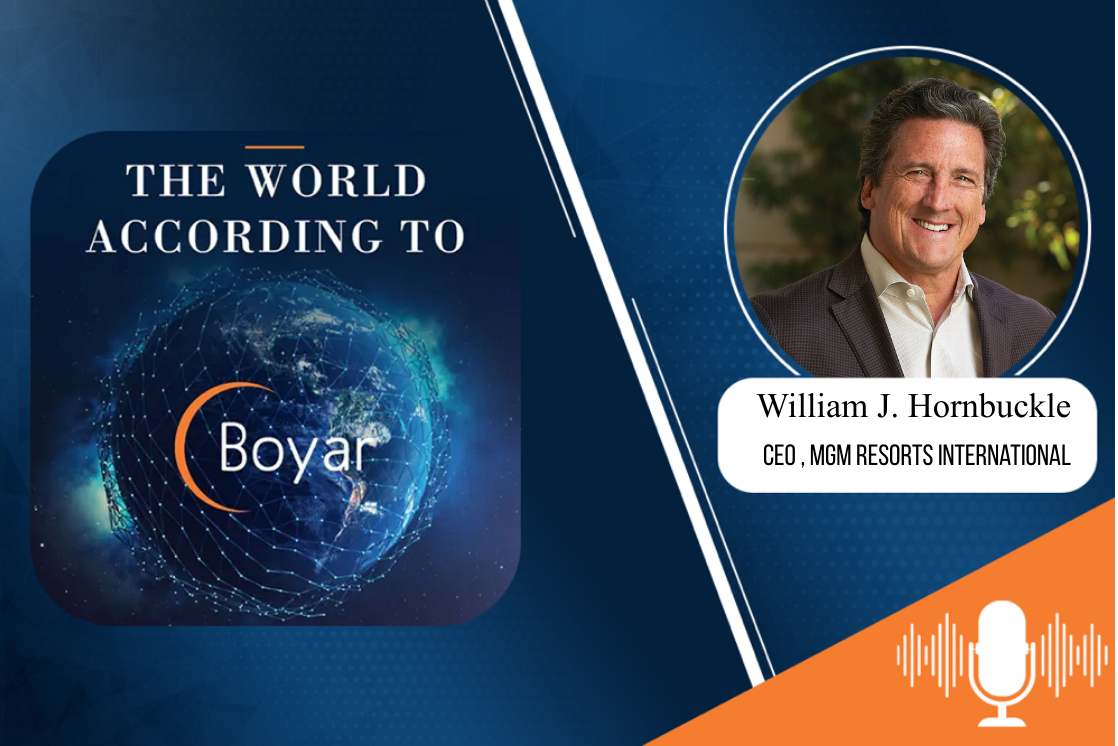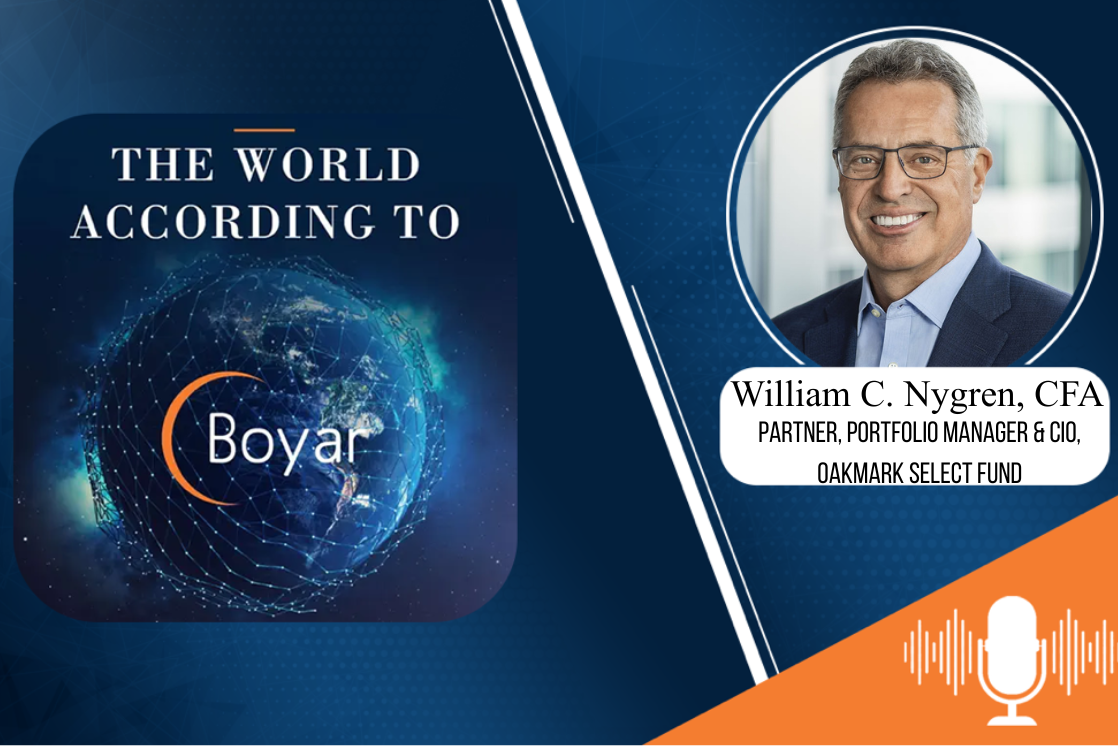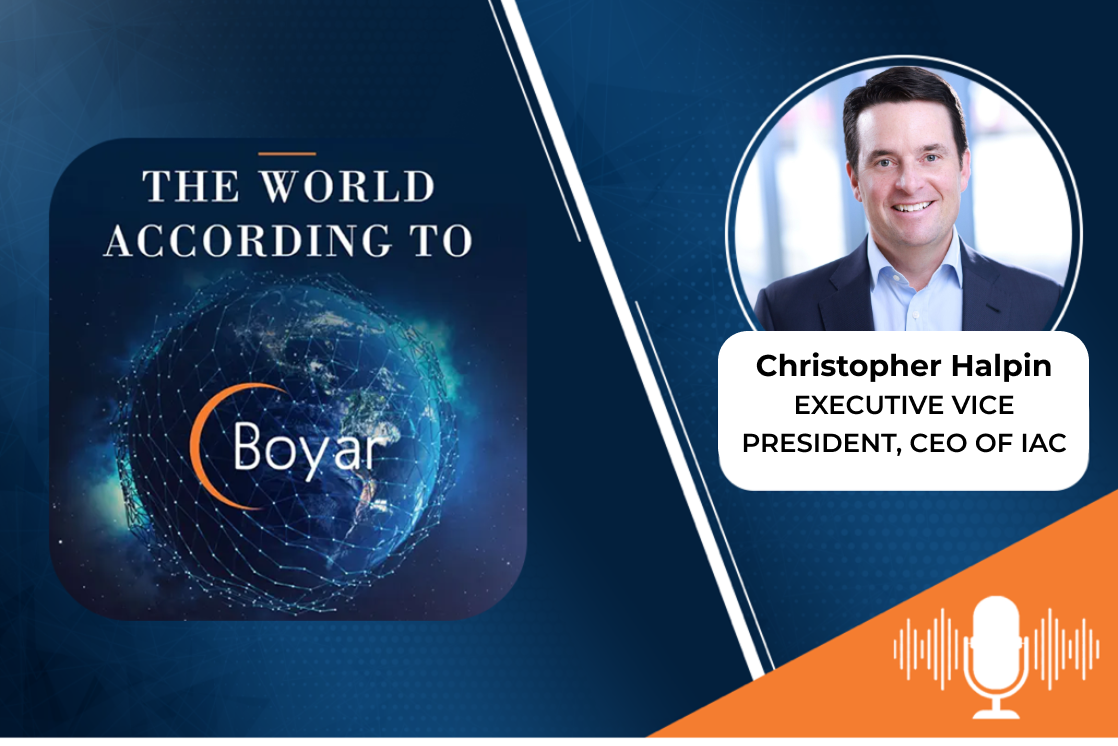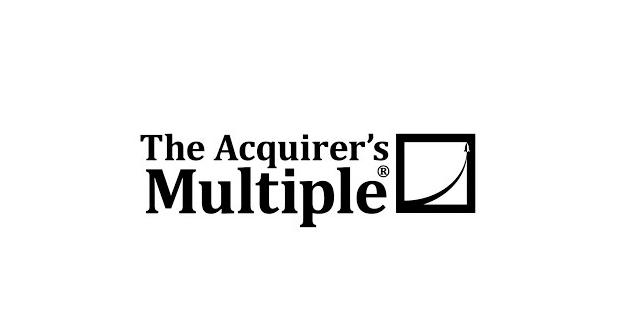IAC CEO Joey Levin on why his company took a 12% stake in MGM, which companies within IAC he is most excited about and more...
The Interview Discusses:
- Lessons learned from working with media mogul Barry Diller.
- Why they decided to take a 12% stake in casino giant MGM.
- Which businesses within the IAC portfolio he is most excited about.
- How he approaches capital allocation at IAC.
- Which stage he believes Angi is at in their fixed priced transformation.
- Why he believes Angi’s “take rate” will increase with time.
- IAC’s major competitive advantage.
- Why he believes Care.com is a major opportunity for IAC.
About Joey Levin:
As CEO of IAC, Mr. Levin is responsible for the strategic leadership of IAC and its operating businesses and also serves on IAC’s Board of Directors. Prior to his appointment to CEO of IAC in 2015, Mr. Levin was CEO of IAC’s Search & Applications segment, where he oversaw strategy across IAC’s mobile and desktop software and media businesses. Prior to this, Mr. Levin served as Chief Executive Officer of Mindspark, an IAC subsidiary. Mr. Levin has also served as IAC’s Senior Vice President, M&A and Finance. Prior to IAC, Mr. Levin worked in the Technology M&A group for Credit Suisse First Boston (now Credit Suisse).
Mr. Levin is Chairman of the boards of Match Group, Inc. and Angi Inc. and also serves on the Board of Directors of Turo and MGM Resorts International. He graduated from the Jerome Fisher Program in Management & Technology from the University of Pennsylvania, with a BS in Economics from the Wharton School and a BAS in Engineering from the School of Engineering and Applied Sciences.
Click Below to Read the Interview Transcript
Transcript of the Interview With Joey Levin:
[00:00:00]
[silence]Jonathan: Welcome to The World According to Boyar where we bring top investors, best-selling authors, and business leaders to show you the smartest ways to uncover value in the stock market. I’m your host, Jonathan Boyar. Today’s special guest is Joey Levin. Since 2015 Joey has been CEO of IAC, which owns a collection of largely online businesses such as Angi, Vimeo, online publisher Dotdash, Care.com, as well as the host of other smaller, faster-growing businesses. Joey is also executive chairman of Match Group, which until recently was controlled by IAC, is on the board of casino giant, MGM, where in August of 2020, IAC opportunistically invested $1 billion to acquire a 12% stake in the company.
Over the past five years under Joey’s leadership, IAC shares, if you include spin-outs, have compounded at an annual rate of 60% versus 17% for the S&P 500. Full disclosure, clients of Boyar Asset Management, as well as myself, own shares in IAC, as well as IAC controlled Angi Homeservices. Joey, welcome to the show.
Joey: Thank you. Thanks for having me.
Jonathan: Really excited about the interview. I guess I’ll just delve right in. IAC has a market cap of a little over $20 billion, Match’s market cap is a little below 40 billion. You’re CEO of IAC and executive chair of Match. You’ve accomplished this, and you’re only in your early 40s. How do you achieve this level of success at a relatively young age?
Joey: One step at a time, [00:02:00] I guess. I’ve been very fortunate to be a part of IAC, which is a dynamic business with a dynamic chairman and a philosophy that generally– There’s a lot of components, but probably one of the most central elements is to do things differently, try and create new ground or try and go against whatever is the status quo. Things like specific experience or age are less relevant at IAC than they might be at another place. The thing that matters at IAC is people being passionate about something that they’re working on, working really hard on it, and wanting to get a chance to succeed at it, which is something that we give people.
Jonathan: You mentioned an executive chairman. That’s obviously Barry Diller. What are some of the important things that he’s taught you along the way?
Joey: Always think bigger is probably a big one. You think you’re thinking big at something. You say, “Look at this little business that’s doing a few million dollars of revenue. We can imagine one day if we work a lot of things out, we could do a $100 million in revenue.” Most people would say, “Wow. Well, that would be quite an accomplishment for a little business.” We could say that to Barry, and he’d say, “Well, why bother then? Because there’s a much bigger opportunity. If you’re not going for a bigger opportunity than that, then why bother?” That boundaryless thinking has been really important to creating value at IAC and really important to consistently setting the bar and the ambitions higher.
If you start with small ambitions, [00:04:00] the best you do is achieve those. We’re trying to look bigger, go after bigger markets, bigger opportunities with bigger wins that could work out for IAC. That’s been a pretty important one. Also, the willingness to allow yourself to be challenged, to challenge others, and to be comfortable in that state of constantly challenging and being challenged. I don’t ever have any problem disagreeing with our chairman on anything we want to disagree on, nor certainly does he with me. That gets us along with all of our colleagues.
That I think gets us to better answers because if you just start with one and everyone agrees or doesn’t challenge it, then you don’t explore the nooks and crannies of it in a way that allow you to prepare better for the future or better for thinking about what could go wrong or things like that. That challenging culture is really at the essence of getting to better answers I think. Those are some of the important ones, but there’s a lot.
Jonathan: Speaking of thinking big, in August of 2020, you announced a billion-dollar stake in MGM. It’s now May 2021 and that investment, using share prices, increased by about 128%. You get shown deals every day and you obviously pass on most. I’d love to hear how you sourced the idea and what gave you the confidence to give it the green light.
Joey: MGM in particular was a period where we were hair on fire looking at opportunities [00:06:00] knowing that we had a very short fuse because this was March and April of 2020, no one knew what the future looked like, everyone was scared and our businesses were in fine shape. Some businesses declined meaningfully for a short period, but we knew we had a very strong balance sheet. We knew we had the ability to get to the other sideway. As we do always believe that, ultimately, things come back to normal relative to challenging situations.
We said, “We have a very short window to deploy capital here. Let’s make sure we don’t miss this window.” We were looking at ideas round the clock in that period to try and figure out where to go. One thing we realized early was that buying an entire company in that window was probably impossible. Boards of directors weren’t meeting in that window to say, “How do we sell the company?” The only ones that were, were ones who were truly out of money, truly bankrupt, or at a significant risk of near-term bankruptcy. We looked at some of those but didn’t see ones that fit.
We realized that if we were going to put a lot of capital to work in that window, it would have to be likely through public companies and minority investment public companies. In that context, we looked at ones that didn’t have a control shareholder where we could be a meaningful shareholder and where we thought we could add value in the company. Also, ones that were clear leaders in their category with very clear asset value and enough capital to get to the other side, whether their own capital or capital we could contribute. That actually narrowed the field pretty quickly.
Among those, MGM was an idea that I think originated with somebody from our board, Alex von Fürstenberg, who had been talking to somebody else [00:08:00] about the idea. I think we had talked about it a few times in passing, but that one was something that we started to get excited about. I think he was, if not the catalyst, certainly a meaningful catalyst in it. We were looking at that in the context of all the other things we were looking at and as we do with every idea, we went through this process I was referring, which is taking apart the idea and figuring out all the reasons why it wouldn’t work.
Could they run out of money? Would the world change in some meaningful irreversible way? All these things you go through and then get what they were doing strategically. At each step, we didn’t find a blocker. In fact, we found more exciting opportunities, which was the sum of the parts thing, which was something that we’re familiar with. They had, basically still do, three different public companies under the same umbrella. They also had this really interesting theme that’s been relevant for us, which is an offline to online migration through a joint venture they have called Bet MGM, where they are one of the top three players in the US for digital gaming which is a business that’s a multi-billion dollar market today probably be 10x bigger 5 years from now, somewhere in that neighborhood.
You’ve got a market, you’ve got a leader in a very established category with great cash flow, which is I think some downside protection, then you’ve got a digital upside opportunity which is just a huge growing category with tailwind and a leadership or a potential leadership position there. The combination of those two things, which was the cash flow and downside protection plus the upside optionality, was really all we needed to proceed. You add to that a seasoned, solid, strong management team, they just had a new CEO, but a [00:10:00] person who had been in the business for an eternity and who knew it backwards, forwards, upside down, and sideways.
That was a winning formula for us. That has, so far, worked out very well, very quickly. Probably we’ve joked internally, I’ve joked a little bit dangerously, which is generally to create a billion and a half dollars of value, we’ve had to work for years and years, decades, making mistakes harrowing moments, all the things that you do to get there, which are very rare. This one happened in a few months. We didn’t have to do much work at all. The management team on their own did all of that. We were just, sitting back observing.
Jonathan: How did you come up with $1 billion? I think you had about $4 billion of cash on the balance sheet around that time, roughly. Did it just sound like a nice round number or was there just a capital allocation decision there?
Joey: It was two factors. One, it was a little bit of nice round number of us saying, this is about in the neighborhood of what we’re comfortable with, but the other big factor was we were buying in the public markets. We could buy up to 4.9% quietly and then our goal after that was to buy as much as we possibly could before we had to disclose. I think it ended up being a little bit more than a billion, but a billion and change we put in and that got us to 12%. I think they had 10 days to buy– I can’t remember how it works. You have 5 or 10 days to buy, and we bought as much as we possibly could in that time, which got us to the 12%, which ended up being somewhere in the neighborhood of a billion.
Jonathan: You think MGM is more of an attractive opportunity, even though the valuation has gone up now that you have certainty over COVID vaccines or as much certainty as you can, as it was when you bought it, obviously at a much lower price, [00:12:00] but you had that visibility that the world’s not going to end?
Joey: Yes, absolutely. MGM, I think they said last quarter, they had bought back some of their own stock. That’s, I think, a testament to the answer to your question. Yes is the answer. Two things have worked out probably better than we thought. Number one, the pace of the recovery. We always believed it would recover and we always believed they have enough capital to do that, but the pace of the recovery has been faster. Two, the pace of acceleration at BetMGM in capturing share. Now, there’s still a lot of unknown at BetMGM.
Most significantly, all the businesses in this category are losing an enormous amount of money and continuing to lose an enormous amount of money because it’s very competitive, it’s hard to acquire customers, it’s expensive to acquire customers. I think MGM has some unique advantages that they’ve been successfully leaning into. Nonetheless, it’s expensive. There’s still a lot of unknown as it relates to what happens when all of this spending shakes out or settles down. For now, taking real share in what is a huge and growing category.
Our thesis was that the offline and the online work together, that they both enhance each other. In some categories, online destroys offline. In this category, I think online enhances offline. One of the best examples of that was the state of Michigan, it’s the state where MGM has the best property in the state in Detroit. The MGM was at the beginning, other [00:14:00] states we’ve been late joining, this one was at the beginning. The combination of being there from the get-go with a physical property, and the success that we’ve seen there demonstrated how this whole ecosystem can work together in MGM’s favor.
I think that was really, really compelling. That a little bit validated the thesis, probably more than a little bit validated the thesis and that’s been a positive too. When we look at it overall, I think we feel stronger now than we did going in.
Jonathan: In your letter, right after the stake was announced discussing the deal, you left it pretty open-ended on how you would assist MGM. What have you been doing to help? I know obviously, you’re on the board as well — You obviously have great expertise on internet-related businesses. Are you actively engaging with them?
Joey: Very much. I had a call with them last night. Wherever they need us is the answers to specific examples, we’ve trying to help with talent. We’ve helped with sourcing or recruiting some folks. With some of the technology questions that MGM needs to answer for itself and also through the joint venture where and I see employee has joined the board of the BetMGM joint venture. With ideas and direction and helping with the storytelling, all that we’re trying to be helpful with, but we’re not doing anything really ourselves.
We’re passengers here with a team that’s very capable and doing well, doing it all on their own. It’s just us, we’re here to help when they need us and whenever they call, which they do sometimes, we [00:16:00] chip in.
Jonathan: You’re about to spin off Vimeo I think this week or so. Right now the most valuable piece of IAC after the spin-out will be your stake in Angi, your cash, Dotdash and obviously your MGM stake as well. You have a lot of lesser-known companies under the umbrella. Which are the ones that you’re most excited about that investors really should be paying more attention to?
Joey: I really am excited about all of them. If I want to pick out some that you haven’t mentioned that are fun right now, you take one called Turo. Turo we’re the largest minority shareholder, but own a meaningful stake in the business. I’m on the board along with my colleague Mark Stein. The businesses in a fantastic macro situation right now, which is, they’re in the business of peer-to-peer car sharing. If you think about Airbnb as it relates to hotels or vacation homes. Turo does similar for cars.
As a owner of a car, you can generate income from your car and as somebody who needs a car, you can get the most unique set of car inventory anywhere from Turo, generally at a pretty attractive price too relative to the rest of the market. What’s happening macro is two things that are really helping the business, besides the general situation which is Turo’s a much more engaging experience, much better experience. Once you use Turo instead of a traditional rental car, you really don’t ever want to go back to a traditional rental car. [00:18:00] What’s leading to a lot of discovery right now is, number one, there’s a lot of more, it’s called local mobility.
People are less getting on planes. Airplanes are starting to recover, but still even domestic travel on airplanes is still down, so people are taking cars, they’re taking cars for trips and sometimes they use fun cars for trips. That’s really helping Turo. By the way, even in that context, the rental car companies are based in airports. When there’s less people in airports, we don’t need the airports to operate our cars, they are spread out all over the place. The airports also all want to take a tax on the consumer to use cars in airports. We, fortunately, avoid some of that infrastructure by being a different kind of company.
Long-winded, the two macro things that are happening, one is the local mobility, the second one is that because during this crisis, a lot of the car companies sold off their fleets, and now with the chip shortages, the OEMs can’t make new cars, they can’t replace those fleets. You see these stories about the rental car companies charging insane prices for access to cars because the supply and demand aren’t lining up. We have supply and we can grow our supply. We don’t need to go to the OEMs and buy 1,000 of the same car at a time. We’re finding this all the time. Somebody whose operation is working picks up a second car.
Sometimes they buy a second car, sometimes they get a second car from their sibling or their brother-in-law, or father-in-law, or somebody who’s not using a car or who only use the car part-time. They realize that this is a yielding asset and that all these things are unused and they can do it. The business is seeing fantastic growth right now, which is a lot of fun. I think the way it’s transforming [00:20:00] the categories, something that’s going to be very– It is already and will continue to be something that is very beneficial for consumers. That’s a fun one, but we’re, again, minorities there.
We’re also in this category that I think is fascinating, which is matching temp labor with employers. This category lately has gotten a lot of tangential noise because of what’s happening with stimulus and what’s happening with unemployment benefits, and whether people are going to work or not in these light industrial jobs. What this platform does is it matches workers with employers. That traditionally happened, really still today, almost entirely offline. There were resumes, there were interviews, there were phone calls, there were literally physically going to pick workers up at a certain location and move them to another location.
Now in a small way, because it is still very small, but I think if you fast-forward a few years, then we’ll all be down with software, it’s just a better way of doing it. Knowing whether somebody is available to work, knowing whether somebody is proximate to a work location, knowing whether somebody is commute could be half-hour shorter, knowing whether their commute could be a few dollars cheaper. All these data points, knowing their propensity to show up on time, their ability to operate a certain kind of machine. Most of those things are actually relatively binary.
There’s not a huge amount that’s accomplished in an interview in jobs like that. You’re qualified for the work, you’ve done the work and you’ve either demonstrated or not an ability to show up and show up on time for that work. Software is going to be better at judging that than people are at judging that. That’s the idea with this platform is to match the workers with the work and really help the workers [00:22:00] in that context get better jobs, better-paying jobs that are closer to their home, that are more convenient for whatever they need to accomplish and getting rid of a lot of the hassle that really adds no value in that ecosystem.
We’ve got one business doing that in the light industrial space and we’ve got another business doing components of that, not in the same way, in the healthcare space. I think that it’s a pretty interesting category for us. That’s a fun one.
Jonathan: IAC is known for taking businesses, as you mentioned just now, that are primarily currently conducting most of their business offline and transitioning them to online. You’re doing with those businesses that you just referenced. You did it with Ticketmaster, Expedia, Match Group, Angi. Are there really any major categories left for IAC to enter that haven’t meaningfully transitioned from offline to online?
Joey: I thought for sure we’d be out of gas on this strategy by now or five years ago and there’s still a lot more. There’s the one we were just talking about temp labor. It’s almost entirely offline right now. Even Angi is probably still 10%-ish online, definitely less than 20% online. Healthcare is another huge one. We’re basically nowhere in healthcare other than a bit through this employment business. Healthcare is still significantly offline. Food has only in the last few years moved online. The pandemic was a big catalyst for that, but food just probably over the last three years moved massively online. It was otherwise offline.
Offline to online is a little bit– We still talk about it and it’s still, I think, a great way to look at it, but it’s a little bit old news in the [00:24:00] sense of what does offline to online mean anymore? There are different evolutions of online. Another big theme for us has been in a few of our businesses that we’re in that we’ve considered entering is the first amazing moment in going online, you might remember, but most people probably don’t, is this thing of there’s a list of all the available information online. That was transformative when you could find all the information, whether that was in travel or whether that was in ticketing or whether that was just in search, with Google offering you 10 billion results on any query.
Now, what’s happening is, just having the information is not– that’s obviously table stakes. In fact, that can get annoying. What you really want is the curation. You really want to go down to one answer or a couple answers and that curation is a whole other evolution in these businesses where you see disruption from the person providing the lists or the entity providing the list, the entity providing the match and, ultimately, the entity providing the transaction. In all of our businesses, probably Angi most pronounced is, we’re trying to enable that transaction online. That’s another evolution.
Jonathan: As I mentioned earlier and as well-known, you’re about to spin off a Vimeo. You have about $3 billion in cash. Do you have a preference of how you’re going to use it? Do you anticipate any of your current businesses needing a lot of cash, or you think it’s going to be spent on acquisitions? How do you see your use of capital going forward?
Joey: It’s probably not likely a huge amount of capital in just P&L losses. I do think one thing we have been doing with Angi and probably will continue to do is reinvest profits in Angi, but probably not. [00:26:00] Not likely going below zero in those businesses to reinvest, at least not a significant amount of cash into those businesses. We’ll invest into businesses and reinvest P&L, but I wouldn’t say materially more that way. That really leaves acquisitions or new acquisitions, acquisitions in our existing categories, or acquisitions of our own business, which is another word for share repurchases.
We’ve gone through periods where there was after the 2008 spinoffs where we span off four businesses in that period. I think we bought back over a few years basically half our shares. That’s one option. Another option is getting into new businesses and buying more businesses. I think both are possibilities and both are something that we analyze pretty regularly and we’ll continue to analyze regularly.
Jonathan: I guess when Anjali, who is currently leading Vimeo, came to you when it was a much smaller company with a new vision for it, you ended up plowing a lot of money into growing it to where it is today. What gave you the confidence to aggressively invest in that business?
Joey: The big thing that Anjali did was, she convinced us that it was– she really made the case for it being a much larger market than we originally thought. With the tools business, the services business, software as a service business had been Vimeo’s business for a very long time. We thought it was a small cottage business and we needed a really a big ambitious business. That’s what led us into the entertainment business, building our own streaming service. We knew that it was a big market, there were some big players in that market, eventually [00:28:00] ended up being basically every player in that market, but there were some big opportunities there.
What Anjali showed was that, actually, the market for people that needed those services were not just the software as a service video software as a service, were not only the most highly talented filmmakers, which was the bulk of Vimeo’s paying user base at one point, it was really anyone who could use video in their business. When we realized that, it became worthy of significantly more investment and significantly more acceleration. That’s what led to certainly the next $300 million of capital going into that business under her leadership.
Jonathan: For every Vimeo grand slam success, I imagine there has to be a lot of failures. How do you know when it’s right to walk away from an investment? You walked away from the streaming part of it and with the benefit of hindsight that was a great move because you have some deep-pocketed players. How do you know when to walk away?
Joey: The streaming business never really made it out of the crib or the womb or something if we keep going with the analogy. That was relatively easy. We’re investing in things constantly. When you see some sign of traction, you keep going, and when you see no traction, you pull back. You have to think about it differently. The way we think about it is, it certainly ties to the scale of the business. We have a big business, take Ask.com for example. We bought Ask Jeeves at some point. We bought that business for a billion and nine and at that time it was doing about 75 million EBITDA. [00:30:00] There was no question that we lost the search battle.
We lost that probably not that far after we bought the business, we lost to Google. Google was certainly winning when we bought it. Google was probably winning to a greater degree than we even realized when we bought it. We lost that. Instead of pulling out of Ask because there’s not really an easy way for us to do that as the owner of the asset, there weren’t a lot of people interested in buying it at that point and there wasn’t really a viable path to selling it. For us, it was, “Well, we have to make this business work in a different way, so we have to reinvent.”
We don’t usually have the option. For example, as a passive investor, you could buy something under a thesis, the thesis doesn’t work out, you sell it the next day. That’s not available for us. We may buy something, own something, we were trying and it’s not working, well, then we try something else and then we try something else and then we try something else until we find something that works. We did that with About.com, we did that with Ask Jeeves, we did that with basically every single one of our businesses. We’ve disrupted ourselves and tried something new rather than pulling out completely.
We don’t usually have the option available to pull out completely. We can pull out of a strategy completely and we could do that frequently, and we can pull out of something small, but if it exists as a business and it had a reason to exist as a business, then we ought to be able to pivot it and change and adapt and explore new alternatives until we find the thing that’s working. That’s on us to do that. We don’t really give up or cut things loose in that context.
Jonathan: Just want to focus a little bit on Angi, where you own roughly 85% of the company, [00:32:00] You’re making a big bet on fixed price services. It’s really complicated trying to figure out how to charge for jobs, sight unseen across different markets. How close are you to getting this right in terms of execution? How much further do you need to go? It’s really hard.
Joey: It is really hard. I think we’re close in the sense that we’ve proven it in certain parts of the market and far in the sense that we haven’t proven it in other parts of the market yet. You always learn more things good and bad as you scale further. You have certain assumptions on your ability to automate things. Sometimes you find you can do more things that you didn’t realize you could automate, and sometimes you find you can do less things that you were counting on to automate. We’ll go through those realizations over time, but if you focus just on the homeowner and the homeowner experience.
We’ve determined with certainty that for the vast majority of homeowners, when they get the full experience, they’re going to be happier. Full experience means you go online, you find the service you want, you pay for the service you want, that service is completed, and you’re done. You skipped the step where you have to negotiate, you skipped the step where you have to evaluate different providers for the service, and you skipped the step where you have to chase the person down to show up or finish the job or all that stuff. That is really a magical experience.
When you know you can deliver a magical experience relative to the incumbent, then everything else from there is just engineering to optimize that magical experience. Once you’ve seen the magical experience and delivered the magical experience, then you know the direction you’re headed with very high confidence, and you know there’s [00:34:00] no turning back from that direction. All you have to do at that point, I say all you have to do like it’s easy, it’s very hard, but all you have to do at that point is optimize. That is the phase that we’re in right now.
We talked about this how we change frequency. If you’re coming in and doing a fixed price job, what we call now Angi Services, if your first experience is an Angi Services job that gets fulfilled, your frequency, with a couple of other things built into there, change your frequency by 4x. That is transformational. I allegorize that to a bunch of other experience that we’ve admired, like Amazon Prime. When I first signed up for Amazon Prime many years ago, I remember saying, “Well, we get a package every now and then, and we like Amazon. I feel like I know that it’s $10 to ship something, so if I ship a few things, maybe one thing a month, it’s going to work out that we’ll be close enough with this two-day shipping.”
What happened is, we went from that to, we have a package from Amazon at our house four times a week, probably at least. The transformation was that you could rely on it. Once you can rely on something, then your behavior changes meaningfully. I believe that that same opportunity is available within home services. Right now, the average person does six to eight jobs and we get a little under two of them. I think the right number of jobs could be a multiple of that. Our portion of those could be also a multiple of what it is right now00:35:48]. That’s the behavior that we’re looking for.
We’re starting to see some of the early signs of that. That leaves me pretty optimistic about it. That’s why we’re putting in the [00:36:00] level of capital that we’re putting. I think that the faster we go, the better. Meaning a lot of these gains, a lot of these marketplaces are about building up liquidity on both sides of the marketplace. You got to keep the service professionals engaged and happy, and you got to keep the homeowners engaged and happy. The best way to do that is to keep more volume moving through the system. That’s what we’re trying to do right now.
Jonathan: Right now for Angi, your take rate or the amount Angi receives from a job, I think it’s a little less than 10% for the fixed price services. If you look at a company like Uber, they get roughly 20% or so. Is achieving a higher take rate over time realistic?
Joey: I’m not sure you’re right on your estimated take rate on the fixed price services. It’s going to be higher than that. The answer on take rate overall is yes, I do think it goes up over time because I do think we add incremental value over time to the service professional. We can actually start to make their operation more efficient and save them real costs and share in the savings with the service profession. You may not need a receptionist or a calendar person to be making or booking the calls, or a salesperson to be going out and doing the sales.
You could be more efficient with just people doing the work, and by the way, people doing the work in a finite geographic space, which saves on travel time and things like that, optimizing the schedule, optimizing the payments, not having to do invoice and collections, and things like that. You take a lot of those nuisances out of the equation for the service professional, you can start to justify a higher take rate because everyone’s doing better. The loss there [00:38:00] is the inefficiency and the unpleasant part for both sides. That added happiness is generally going to be added opportunity to share in the economics.
Jonathan: IAC is famous for not holding things forever. You let them go and break free. I’ve always thought that a major home improvement company like Lowe’s, which you do have a partnership with Angi, should own part of. I think it makes sense for both sides. In your mind, does it make sense for Angi to be a standalone, or would it be better to partner with a larger organization, or you’re just trying to achieve what you’re trying to achieve?
Joey: I always default to we’re on our own. We’re always open to things. If somebody calls and says something that makes sense, we certainly listen, but our mentality always is and always has to be we’re on our own forever. You’re right that we’ve spun off a lot of businesses and plan to spin off a lot more businesses. Our philosophy, when we get into something is we own it forever. Spinning it off doesn’t mean we don’t own it anymore. It just means our shareholders own it directly. Same owners before the spin as the owners after the spin.
Now, in reality, of course, some people trade in and some people trade out, so it’s not going to be all the same owners. Our thought is, when we buy something, we buy something to own it forever, we buy something for our shareholders to be able to own it forever, and we do that really efficiently. That forever mindset has been a massive competitive advantage for us, in that, very few other people operate with that mentality. [00:40:00]
Jonathan: No, absolutely. Short-termism is rampant. I know we’re running out of time. I just wanted to touch briefly on Care.com. You bought it not too long ago. Before you bought it, the site had some major safety issues which was profiled in a Wall Street Journal story, which I guess gave you the opportunity to purchase the company. They had a lot of hard problems that they needed to address. What gave you the confidence that you could right that ship?
Joey: A similar situation, in that, we looked at the Care’s market position, which they were, I don’t know, 30x the next competitor on audience. They were the default brand in the category, based on the genericness of their name, but also the brand equity that they had built in that area. Is a very large category, which we felt and we’ve been at least right on this part is that the category has a natural tailwind to it, not just offline to online migration, but also more of society feeling a responsibility to help in care, childcare, and senior care.
We’re seeing this on the enterprise side with the growth in the enterprise business at care, and we’re seeing this in government in the discussion in some of the infrastructure bills that are coming out around care. We’re seeing the necessity of this in what’s happened to the workforce, the makeup of the workforce over the course of the pandemic, and particularly women in the workforce. Now, they’ve borne much more of the brunt of childcare than men in the workforce. People are realizing, enterprises are realizing, government’s realizing this is a problem that we have to solve.
We looked [00:42:00] at that combination of things and said, “This is a really attractive place to be.” Generally, our view is that mistakes are fixable, the company made some mistakes in the past, those could be fixed. I don’t think that they fundamentally undermined the principle of what could be accomplished in that category. I think they just made some mistakes and we had the ability to work on fixing some of those. I think we made progress on– It’s impossible to be perfect, but I think we’ve made progress on a lot of those. We’re seeing that come through in the numbers a bit.
Jonathan: Has the pandemic changed the company’s prospects in your opinion?
Joey: Yes, it has. In a business like Vimeo, that came through in real-time where growth rates tripled, or whatever, overnight. In care, it’s perhaps an even bigger impact, but slower because it awakened the world to our responsibilities in helping with care. Now people are seeing that that needs to now translate into the business and people engaging with the right product to solve these problems. The spotlight on carrying the responsibilities around care is there in a way that would not have otherwise come. That’s going to, I think, be really important to the growth of that business.
Jonathan: Joey, you’ve been more than generous with your time. I want to thank you for being on the show and telling us more about your fascinating career as well as your vision for IAC and Angi in the future. We look forward to watching IAC’s and Angi’s progress. Again, thanks for being on.
Joey: Well, it’s my pleasure. I’m looking forward to all that too. I hope to see you again.
Important Disclosures. The information herein is provided by Boyar’s Intrinsic Value Research LLC (“Boyar Research”) and: (a) is for general, informational purposes only; (b) is not tailored to the specific investment needs of any specific person or entity; and (c) should not be construed as investment advice. Boyar Research does not offer investment advisory services and is not an investment adviser registered with the U.S. Securities and Exchange Commission (“SEC”) or any other regulatory body. Any opinions expressed herein represent current opinions of Boyar Research only, and no representation is made with respect to the accuracy, completeness or timeliness of the information herein. Boyar Research assumes no obligation to update or revise such information. In addition, certain information herein has been provided by and/or is based on third party sources, and, although Boyar Research believes this information to be reliable, Boyar Research has not independently verified such information and is not responsible for third-party errors. You should not assume that any investment discussed herein will be profitable or that any investment decisions in the future will be profitable. Investing in securities involves risk, including the possible loss of principal. Important Information: Past performance does not guarantee future results.
Never miss another podcast click here to subscribe today!
Available wherever you download podcasts:
About The Boyar Family Of Companies
Boyar Asset Management
We have been managing money since 1983 utilizing our proprietary in-house value-oriented equity strategies. We manage money for high net worth individuals and institutions via separately managed accounts. To find out how we can help you with your money management needs please click here
Boyar Research
Since 1975 we have been producing independent research on intrinsically undervalued companies across the market capitalization spectrum and in a wide variety of industries using a business person’s approach to stock market investing. To find out how we can help you with your research needs please click here

